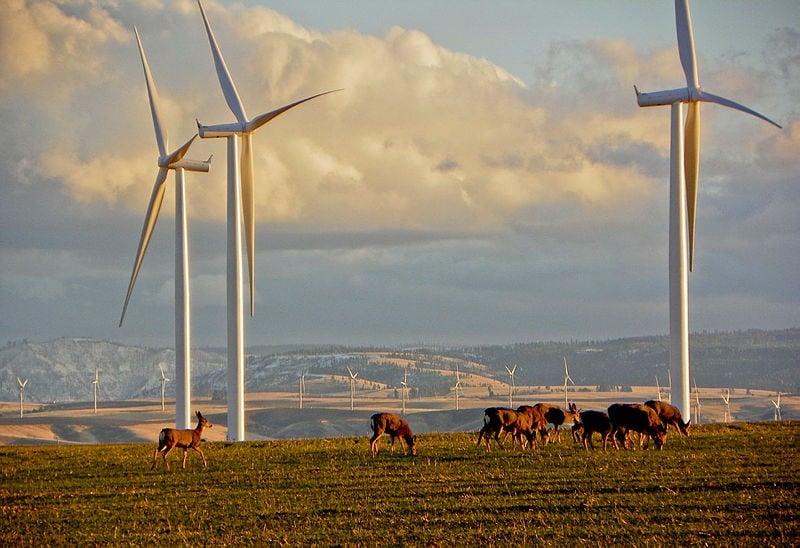Qcells, Brightnight sign solar PV, BESS contracts with utility Puget Sound in Washington, US
September 26, 2024

The utility said it will own and operate Appaloosa Solar Project, a 124MW PV plant to be constructed within the footprint of an existing 342.7MW PSE-owned wind farm, Lower Snake River Wind Facility, in Garfield County, WA.
Puget Sound Energy also announced that it has signed a contract for energy and grid services from Greenwater Storage Project, a 200MW/800MWh standalone battery energy storage system (BESS) in Pierce County. It is under development through a joint venture between developer Brightnight and independent power producer (IPP) Cordelio Power.
The US subsidiary of vertically integrated solar PV and energy solutions company Qcells will deliver the standalone solar project under a fully wrapped contract. This includes developing Appaloosa Solar Project, providing PV modules and acting as engineering, procurement and construction (EPC) contractor.
The manufacturer, part of South Korea’s Hanwha Group, is currently on an aggressive ramp-up of its US-based production lines. It currently operates a module plant in Dalton, Georgia, with a 5.1GW annual production capacity, and a solar encapsulant plant, also in Georgia.
Qcells received a conditional loan guarantee from the US Department of Energy (DOE) worth US$1.45 billion at the beginning of August for its vertically integrated PV plant in Georgia. The vertically integrated facility would have 3.3GW annual production capacity for silicon ingots, wafers, cells and modules. It is being developed in Cartersville, in Bartow County where the encapsulant plant is also situated.
In terms of recent US projects, Qcells commissioned a 50MW solar-plus-storage system with a 200MWh battery energy storage system (BESS) for social media and software giant Meta in California earlier this summer.
Puget Sound Energy senior VP of resources Ron Roberts said the Appaloosa Solar Project—not to be confused with a project called Appaloosa Solar 1 in Utah—would especially benefit the utility in meeting summer peak demand while contributing to Washington’s clean energy goals, which include 100% greenhouse gas (GHG) emissions-free electricity by 2045.
PSE launched its most recent Request for Proposals (RFP) for eligible energy generation and storage resources in July this year, including up to 2.3 million annual megawatt-hours of energy compliant with Washington’s Clean Energy Transformation Act (CETA) along with 1,755MW of summer peak and 1,573MW of winter peak capacity.
Puget Sound Energy adding 1,500MW energy storage by 2030
In line with its CETA requirements and other clean energy goals, and with managing peak demand in mind, PSE is seeking to add around 1,500MW of energy storage to its resource mix by 2030.
Greenwater Storage Project is its biggest step toward that target so far, with only a handful of smaller pilot and trial battery storage systems in PSE’s portfolio so far in its service area.
Greenwater will be built in an industrial park and connected to the PSE grid via the utility’s existing White River substation.
According to a Brightnight brochure, the 4-hour duration lithium-ion (Li-ion) BESS resource will feature around 250 containerised BESS units. White River substation was chosen as the point of connection as it had the largest potential to “provide transmission value and a full suite of grid services to the utility,” the company wrote.
Brightnight will leverage its proprietary AI-based software platform, PowerAlpha, which the company claimed can be used to optimise the design, development and operation of renewable energy and storage assets.
At the end of July, the developer received a Mitigated Determination of Non-Significance (MDNS) from the State Environmental Policy Act (SEPA) official for the city of Sumner in which it will sit, meaning the environmental impact of the project would be acceptable, although it could require mitigation. A few weeks after that Sumner authorities approved the Conditional Use Permit for the four parcels of light industrial zoned land.
Brightnight said that the project has been sited to be visually low-impact and that it has coordinated with the local fire service during the development process, including formulating response plans. The project will also contribute around US$43 million to the local tax base during its lifetime and the developer has also pledged to contribute to community initiatives, including promoting STEM learning.
Earlier this year, Goldman Sachs Alternatives agreed to a US$440 million strategic investment into Brightnight, which, as a relatively new company founded in 2019, is developing large-scale hybrid renewables-plus-storage and standalone BESS plants. It has projects in territories including Australia and Arizona, US, in latter stages of development, and claims to have a pipeline of 10GW of clean energy projects in the Pacific Northwest US, including Washington.
The Pacific Northwest US in general is not yet seeing the same sort of energy storage market growth that other parts of the country are experiencing. Around 60% of Washington’s electricity comes from renewables in the form of hydroelectricity, with solar and wind—mainly wind—comprising about 10% of the generation mix.
However, as that latter proportion grows, storage will help balance out variable renewable energy (VRE) generation, and at the same time reduce the grid’s vulnerability to outages.
Other large-scale projects in development in Washington State include the 200MW/800MWh Goldeneye project in Skagit County, in development by IPP Tenaska. Tenaska recently sought to apply directly to the Washington Energy Facility Site Evaluation Council (EFSEC) in line with new rules that allow developers to go directly to state regulators for project permitting rather than applying to local authorities.
Search
RECENT PRESS RELEASES
Related Post




